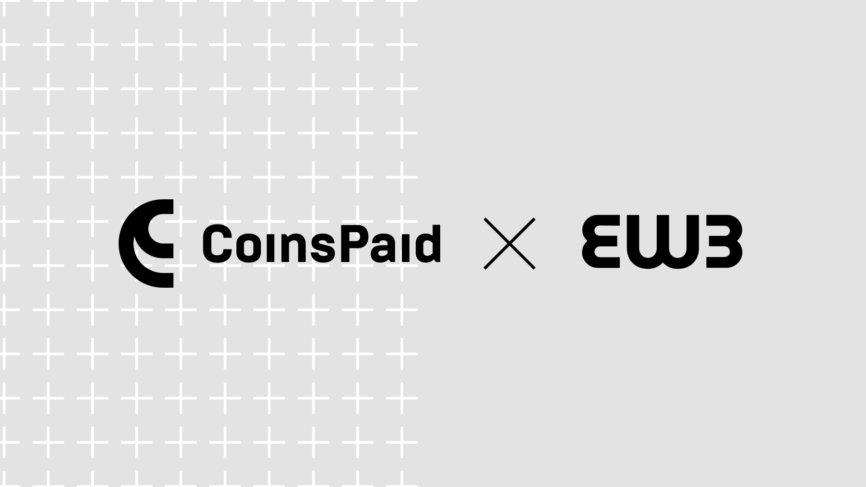Estonian Web 3 Chamber and CoinsPaid Host Successful Conference on MiCAR’s Impact on Financial Institutions

The Estonian Web3 Chamber and CoinsPaid were thrilled to co-host a highly informative conference titled “How is the industry preparing to comply with MiCAR?” The event featured prominent experts including from the EU Commission and the European Banking Authority (EBA) who shared the stage with local authorities from the Estonian Ministry of Finance and FIU and many other specialists among which Sorainen Law firm and EY tax and Law.
The conference, held on October 26, was a resounding success, with a full house of enthusiastic attendees who actively engaged with our distinguished panellists across four informative round tables. As a provider of crypto payment gateway services, CoinsPaid was keen to co-host the conference, reflecting its commitment to staying abreast of regulatory changes like MiCAR compliance.
First Round Table: Crypto-Assets and Traditional Finance: How the Financial Industry Is Preparing for MiCAR?
Ms. Genevieve Douhet, Cryptoassets Program Director, Global Transaction & Payment Services at Societe Generale:
“I think that the banking sector has been adopting a prudent stand towards crypto-assets because they are just regulated entities, and our regulators are kind of reluctant to let the banking sector take a direct position on crypto-assets on their balance sheet. […] In the European context, the regulators are agnostic towards the kind of technology which is used, as long as the regulated entities fully comply with the Regulation. It is a bit different in the US where regulators and banks are less prone to use public blockchains.”
Mr. Diederik Bruggink, Head of Department – Payments, Digital Finance and Innovation, European Savings and Retail Banking Group. (WSBI-ESBG):
“With MiCAR, we are creating something completely new. We understand and support this rationale. But at the same time, we see some challenges for banks who want to move from MiFID compliance to MiCAR compliance because the requirements are more complex than one would expect at first sight.”
Second Round Table: MiCAR and the development of its policy mandates: State of play
Mr. Oleg Shmeljov, Head of Digital Finance Unit (Acting), European Banking Authority (EBA):
“MiCAR represents quite a seismic shift both for the industry and for the supervisors. We have a new type of market participants and new comprehensive regulatory framework which comes with authorisation regime, reporting, on-site and off-site supervision – something that the crypto-assets industry has not seen before. All these regulations and supervision is important to protect consumers and to ensure financial stability in the sector and in the Union. The sooner we collectively prepare and the sooner the industry starts engaging with the supervisors, the better it is.”
Mr. Luca Astorri, Regulation Office, Regulatory Strategies Division CONSOB – The Italian Financial Services Authority, Member of the ESMA Digital Finance Standing Committee:
“MiCAR is, for the crypto industry, about a change of mentality and about embracing a compliance culture at a higher standard compared to the current model. And so, they need to prepare for it and engage with their NCAs, as expressed in a recent statement by ESMA in which market participants and NCAs are encouraged to start preparing for the transition. Industry shall engage with their NCA, prepare for the transition and get ready for the compliance work. It is worth it.”
Mr. Thomas Auväärt, Deputy Head of the Financial Services Policy Department, Ministry of Finance of Estonia:
“MiCAR is a complex piece of law but, if I have to point out the most important issue for businesses, this is to understand if they fall in the scope of MiCAR or there are some grey zones that MiCAR does not cover. MiCAR is a whole new universe compared to current regulations so it is a huge challenge to be ready for it. But, on the other hand, the main merit of what comes from MiCAR is the single passport; this is one of the most important benefits that MiCAR provides for these businesses in Europe.”
Third Round Table: On the road to MiCAR 2: What’s next?
Ms. Christiana Vovidou, Policy Officer in the “Digital Finance” Unit in the Directorate General for Financial Stability, Financial Services and Capital Markets Union at the European Commission:
“Apply for authorisation as soon as the framework starts applying. This is the only advice to give right now to market participants that fall in the scope of MiCA. If you are an issuer, apply for authorisation as an issuer. If you are a CASP, apply for a CASP authorisation as soon as possible. This should be the priority right now.”
Mr. Matis Mäeker, Head of the Estonian Financial Intelligence Unit (FIU):
“My advice to the crypto industry would be to employ the best experts in all fields of their services; MiCAR is not for IT people, it is for compliance people. Now the European Supervisory Authorities (ESAs) are coming in with their own regulation; then there will be regulation from national supervisory authorities and for the industry to prepare for all of this, they need to have proper employees to help them out.”
Fourth Round Table: How is MiCAR impacting Fintechs and service providers?
Raido Saar, President of the Estonian Web3 Chamber:
“When it comes to Estonia, the current Estonian AML Act already puts in place strict rules, for example about auditing. MiCAR is very different, of course, but many very important points are already enforced in Estonia and to be compliant with those new regulations and new rules of the AML Act, our market participants needed to basically reapply for the license. Thanks to this process, I think we can safely say that today we have a completely different market than, for example, a year ago when we had 185 VASPs; now we have less than 100 companies who have what it takes to comply.”
About Estonian Web3 Chamber:
Estonian Web3 Chamber was established to connect like-minded founders, executives and other builders within the Web3 ecosystem so that we could learn from each other, join forces to advocate for the technology and its actual use cases and spread the news about the success of our members across the world.




